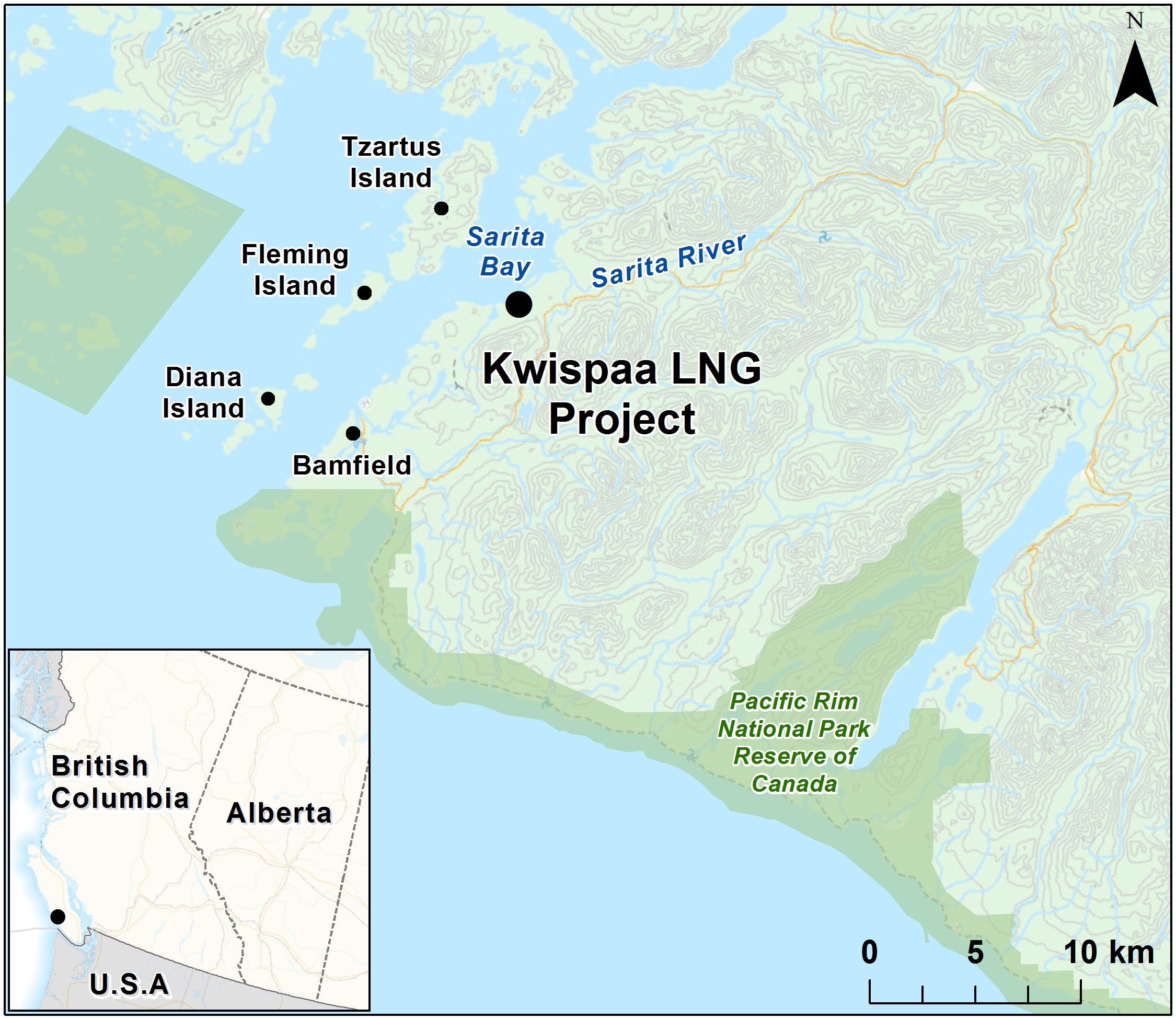Public Notice
Kwispaa LNG Project — Public Comments Invited
December 13, 2018 — The Canadian Environmental Assessment Agency (the Agency) has commenced a federal environmental assessment for the proposed Kwispaa LNG Project, located at Sarita Bay on Vancouver Island, British Columbia.
The Agency invites the public and Indigenous groups to comment on which aspects of the environment may be affected by this project and what should be examined during the environmental assessment, as detailed in the draft Environmental Impact Statement (EIS) Guidelines.
All comments received will be considered public. Written comments in either official language must be submitted by January 16, 2019 to:
Kwispaa LNG Project
Canadian Environmental Assessment Agency
410-701 West Georgia Street
Vancouver, British Columbia V7Y 1C6
Telephone: 604-666-2431
Email: CEAA.Kwispaa.ACEE@canada.ca

To view the draft EIS Guidelines or for more information on the project, visit the Agency's website at canada.ca/ceaa (Registry reference number 80160). Printed copies are available upon request and are also available for viewing at the following locations:
- Vancouver Island Regional Library
Port Alberni Branch
4255 Wallace Street, Unit B
Port Alberni, British Columbia
- Bamfield Marine Sciences Centre Library
100 Pachena Road
Bamfield, British Columbia
For more information on the Agency's privacy policies, consult the Privacy Notice on its website at canada.ca/ceaa.
The Proposed Project
Kwispaa LNG (CF) Limited Partnership is proposing to construct and operate a liquefied natural gas (LNG) export facility located at Sarita Bay, about 10 kilometres northeast of Bamfield on Vancouver Island, British Columbia. As proposed, the Kwispaa LNG Project would convert natural gas to LNG for export to global markets and would include jetty-moored floating LNG production units, marine terminals, and onshore components. At full build-out, the facility would produce approximately 24 million tonnes of LNG per year, over a lifespan of at least 25 years.
Document Reference Number: 8